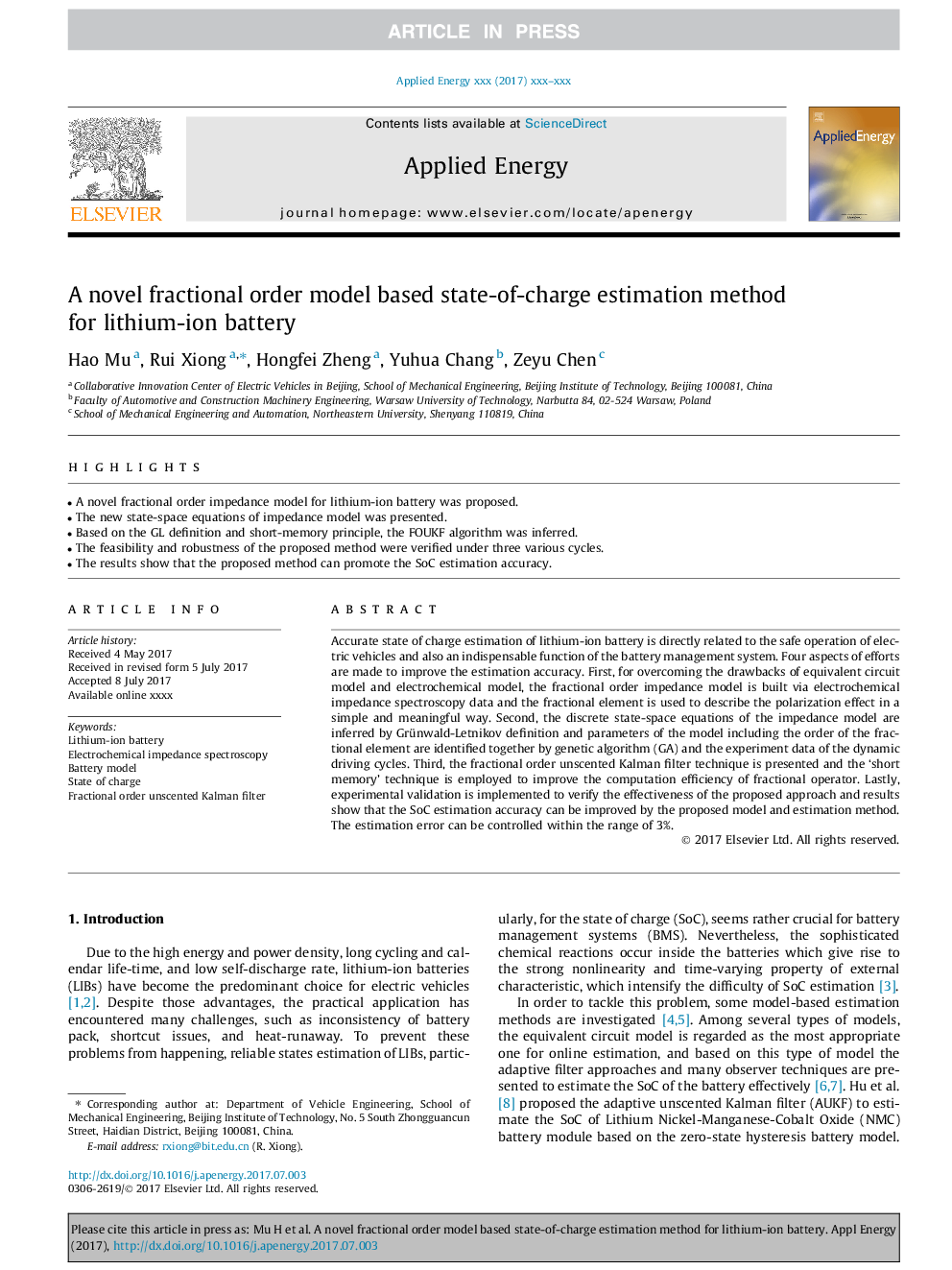ترجمه فارسی عنوان مقاله
مدل جدید برآورد شده برای مدل با استفاده از مدل سفارش قطعی برای باتری لیتیوم یون
عنوان انگلیسی
A novel fractional order model based state-of-charge estimation method for lithium-ion battery
| کد مقاله | سال انتشار | تعداد صفحات مقاله انگلیسی |
|---|---|---|
| 156901 | 2017 | 10 صفحه PDF |
منبع

Publisher : Elsevier - Science Direct (الزویر - ساینس دایرکت)
Journal : Applied Energy, Volume 207, 1 December 2017, Pages 384-393
ترجمه کلمات کلیدی
باتری لیتیوم یون، طیف سنجی امپدانس الکتروشیمیایی، مدل باتری، دولت شارژ، سفارش کریستال فیلتر کلمن بدون سر و صدا،
کلمات کلیدی انگلیسی
Lithium-ion battery; Electrochemical impedance spectroscopy; Battery model; State of charge; Fractional order unscented Kalman filter;

